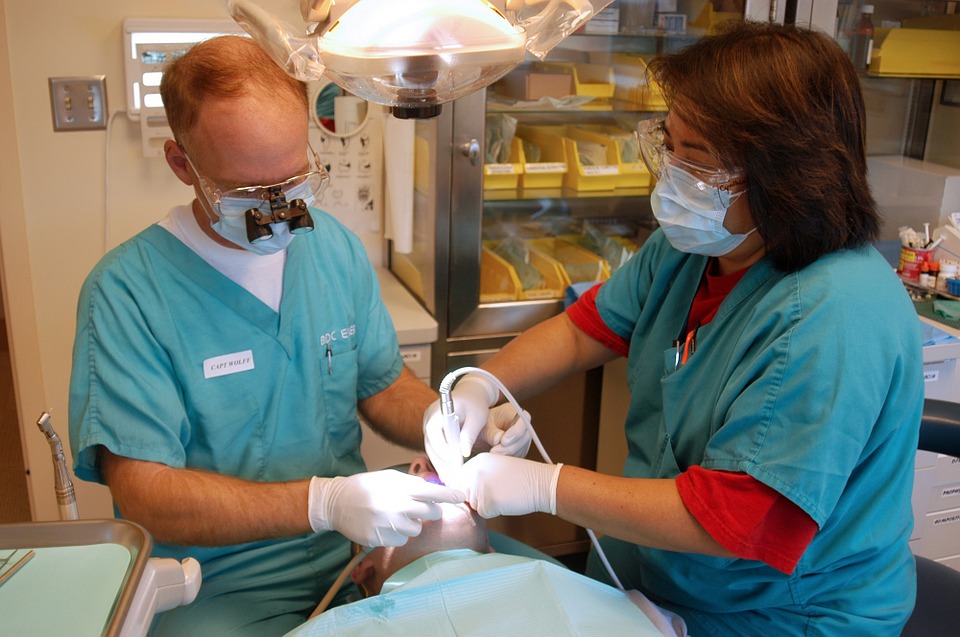Dental Implants to Replace Missing Teeth Permanently
Even the loss of a single tooth affects the health of the jaw and oral hygiene. A missing tooth/teeth can also affect the quality of your life because when teeth are lost, you will not be able eat, speak or swallow normally. Your jaw bones and muscles will also slowly lose shape and tone, resulting in facial changes. Additionally, the teeth beside the missing tooth/teeth migrate and cause spaces that eventually lead to deposition of food which it left without treatment for a few days, will cause more dental diseases.
Hence, the replacement of teeth is essential to maintain a good quality of life. In early days, teeth were replaced by removable dentures which are cumbersome and need a lot of maintenance. Later, fixed replacements were provided using bridges, taking the support of the neighbouring teeth. But the life of these bridges was dependent on the neighbouring teeth and also needed unnecessary trimming of the healthy natural teeth.
With the advancement of science and technology, dentists now use wholesome replacement of teeth using titanium root forms which replace the teeth, permanently. These implants can also be used in a variety of ways to replace multiple teeth and even the whole set of teeth in the most aesthetic and strongest way. So, it is now preferable to replace a tooth using dental implants since the dental implants come with a worldwide life time warranty.
What Is A Dental Implant?
Dental implant Is a prosthetic device which mimics the natural tooth roots. It is implanted into the oral tissues and the bone, to provide retention for fixed or removable dental prosthesis.
Why Dental Implants?
- For convenience and comfort
- Restoration of dental aesthetics
- Restoration of lost dental function such as speech and mastication
- Bone preservation
- Prevention of disuse atrophy after tooth loss
- Space maintenance and occiusal stability
- As an orthodontic anchorage
Different Types Of Dental Implants
A. Based On Geometrical Form
- Screw
- Cylinder
- Blade
- Basket
- Root form
B. Based On Anchorage Component
Sub Periosteal Dental Implants:
Implant that is placed beneath the periosteum, while overlying the bony cortex.
Endosteal Dental Implants:
Implant that is placed into the basal bone of the maxilla or alveolar and transecting only one cortical plate.
Transosteal Dental Implants:
This Implant passes through the full thickness of the alveolar bone and penetrates both cortical plates.
Components of Modern Dental Implants
Osseous Component/Fixture:
It is inserted into the bone and gets attached to the bone via osseointegration
Tranamucosal Componentl Abutment:
It interacts with the mucosa and connects the implant with the super-structure.
Restoration Component:
This can be a single crown or bridge or overdentures or even a hybrid prosthesis.
Dental Implant Process
Conventional Dental Implant Treatment is generally a three phase protocol:
First Phase
The first step Is when the implant is surgically placed in the precise location into the jaws. A screw is inserted into the implant, so as to prevent gum tissue and debris entering into it (cover screw). It is then covered by the gums and left undisturbed for the next two-four months as it heals by osseointegration.
Second Phase
After a period of two-four months, the implant is exposed surgically either with a blade or laser and a component known as gingival former is attached to it. It is kept for a period of one-two weeks as this time allows the gums to form around the dental implant.
Third Phase
The step involves the placement of the prosthesis which can be crown bridges or overdentures.
Case Selection
A successful dental implant treatment depends on a systematic approach and rigorous treatment planning. A thorough social history, medical condition and the patient’s expectation has to be evaluated. Any present dental condition should be treated before embarking on a dental implant treatment, especially co-existing with gum disease. However, though there are very few absolute medical contraindications for a dental implant treatment, some of these are mentioned here.
Contraindications For Implant Treatment
- Radiotherapy to the jaw bone
- Untreated intraoral pathology or malignancy
- Untreated periodontal disease
- Uncontrolled drug or alcohol use (abuse)
- Uncontrolled psychiatric disorders
- Recent myocardial infarction (Ml) or cerebrovascular accident (CVA) or valvular prosthesis surgery
- Intravenous bisphosphonate (antiresorptive) therapy
- Immunosuppression – for example, following organ transplant or treatment of systemic disease
Advancements In Dental Implants
Zygomatic Implants
- Zygomatic implants are indicated ¡n cases of resorbed maxilla
- The Implants are anchored in the upper jaw bone which is close to the zygomatic bone
- It is longer than the normal implant and attached to the zygomatic arch and hence called zygomatic implants
- Zygomatic implants are designed to give high stability
- It does not have a grafting procedure, hence it requires shorter treatment time and fewer clinical visits with immediate function
Basal Implants
- Basal implants are designed in such a way that the prosthesis can be given immediately
- Basal implants have a high success rate in patients with less bone height
- In basal implants procedures, no bone grafting procedure is required and it is minimally invasive
- As it includes the basal and cortical bone, the support is really strong. (may or may not be included as there are lot of controversies with regard to basal implants)
